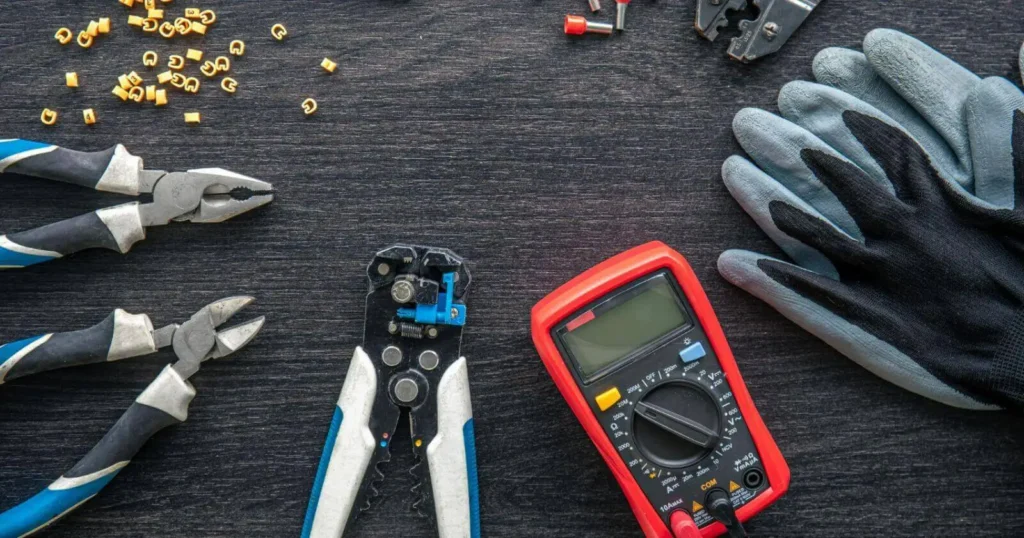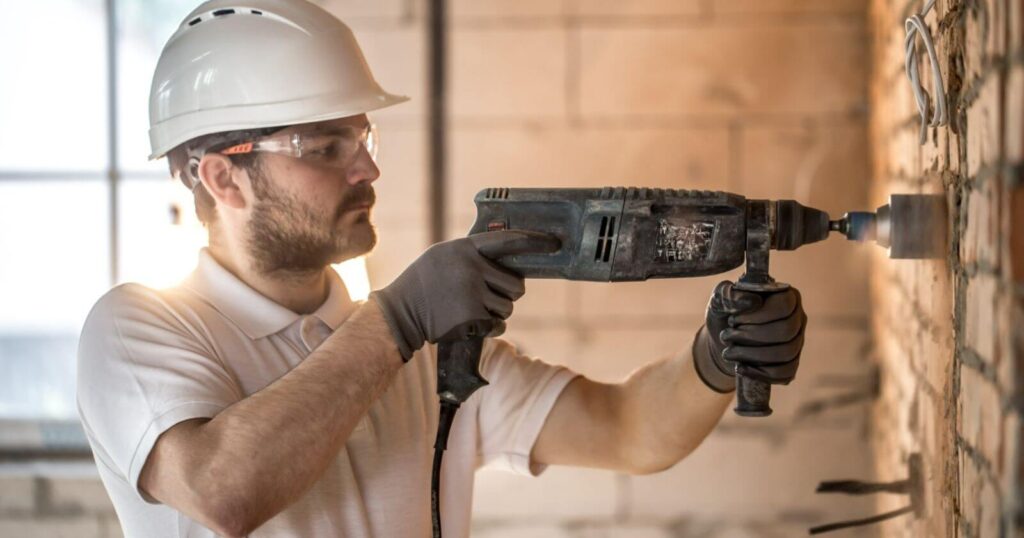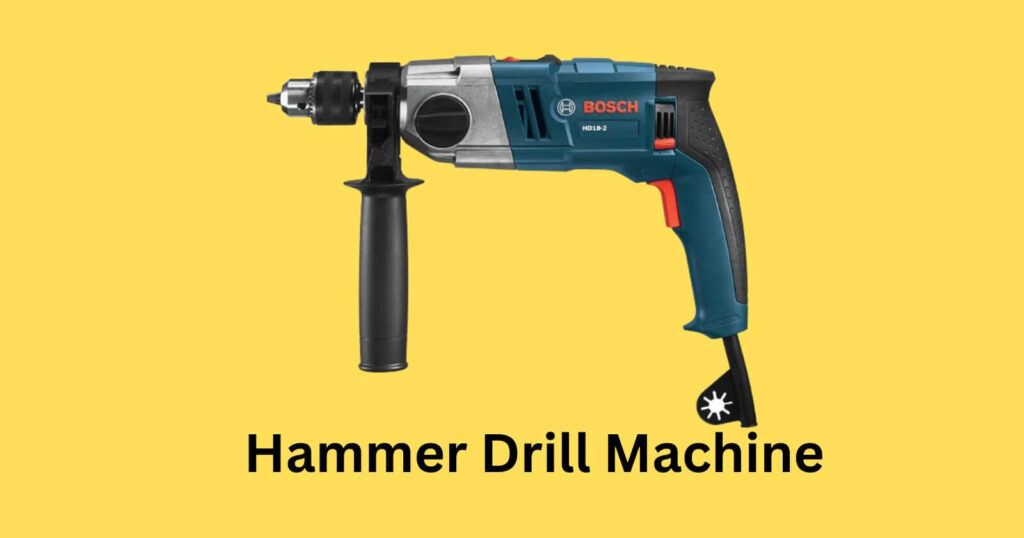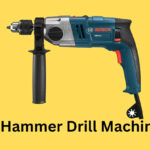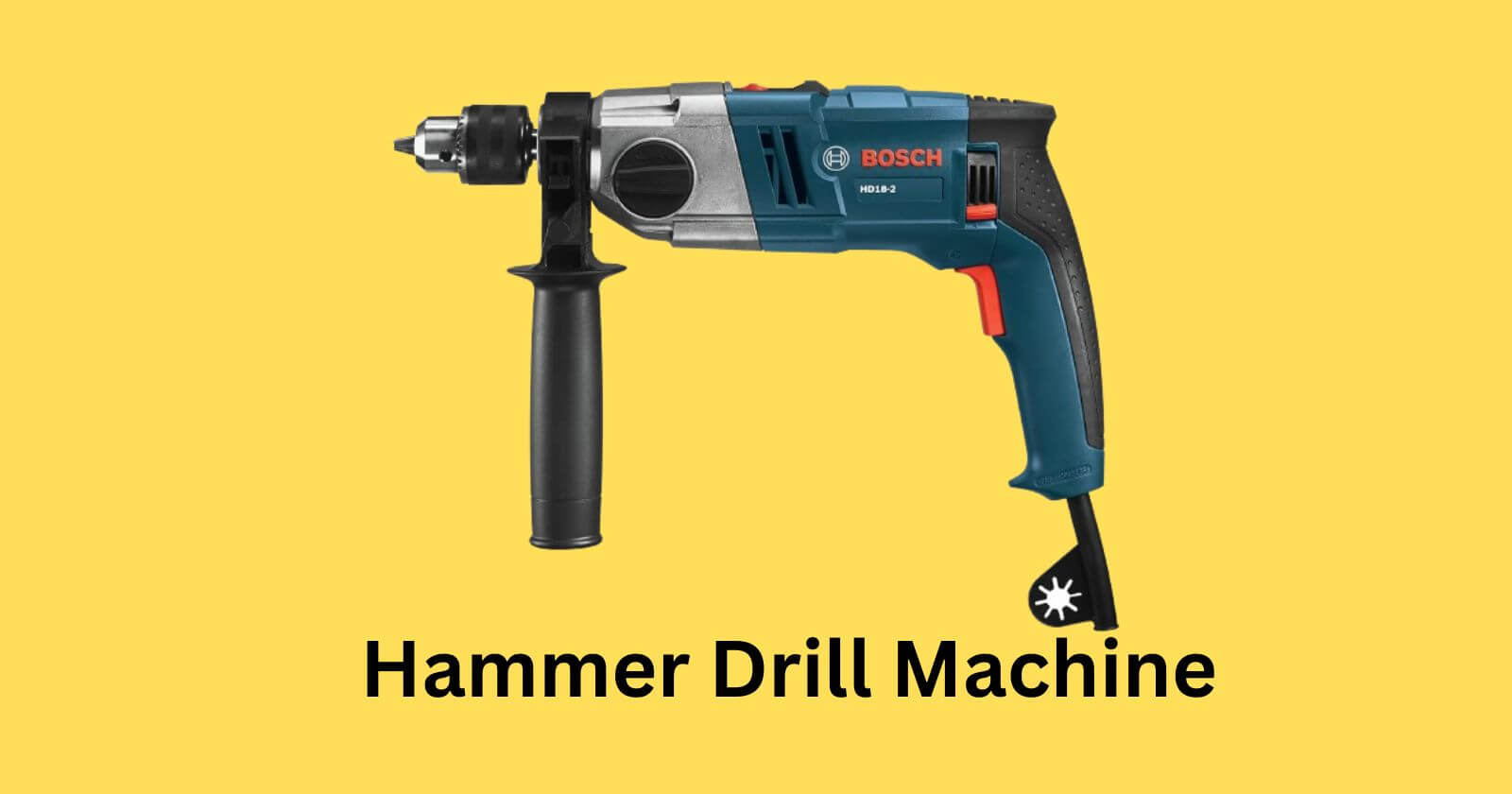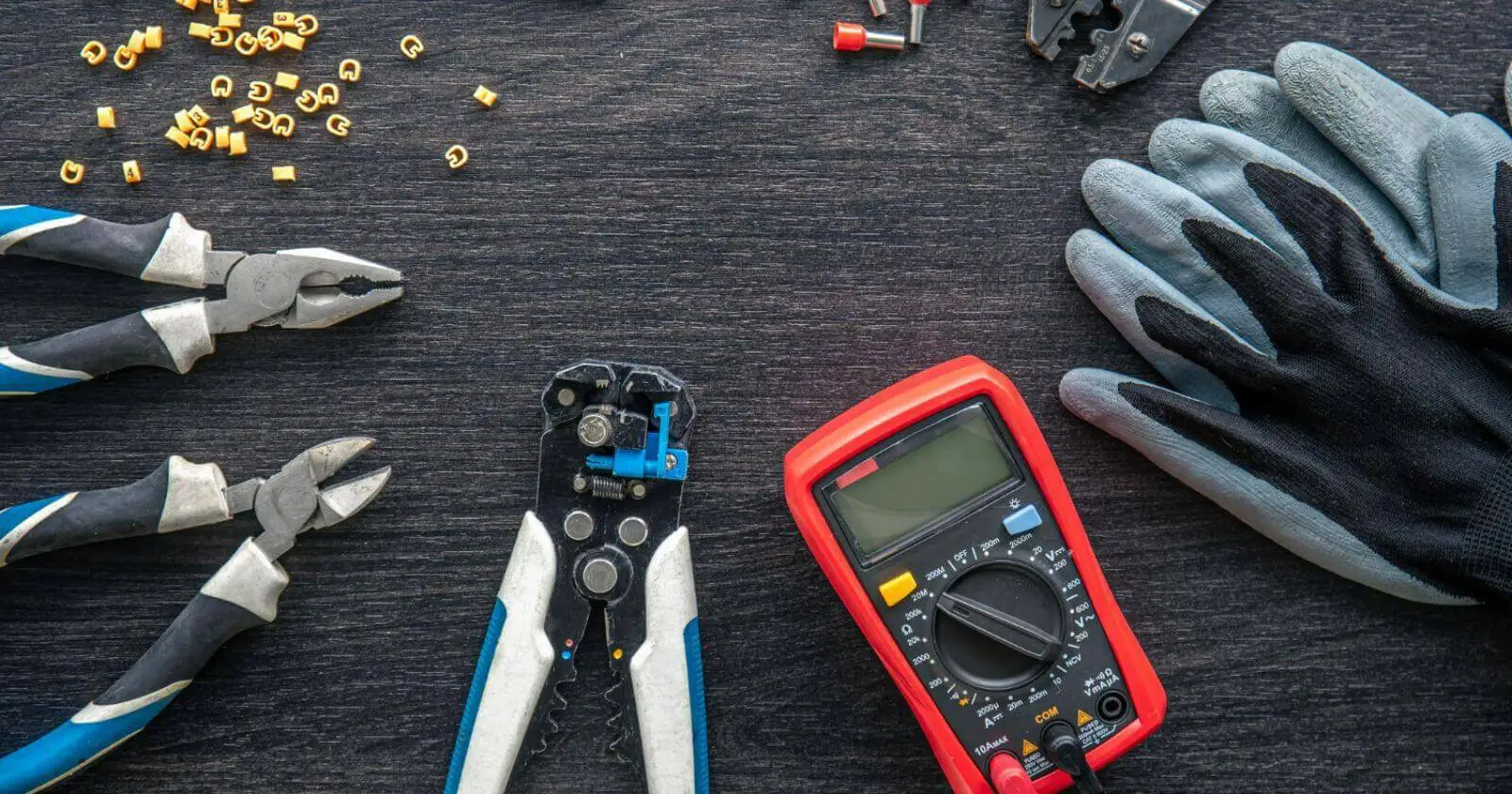How to Drill Into Concrete: A Step-by-Step Guide
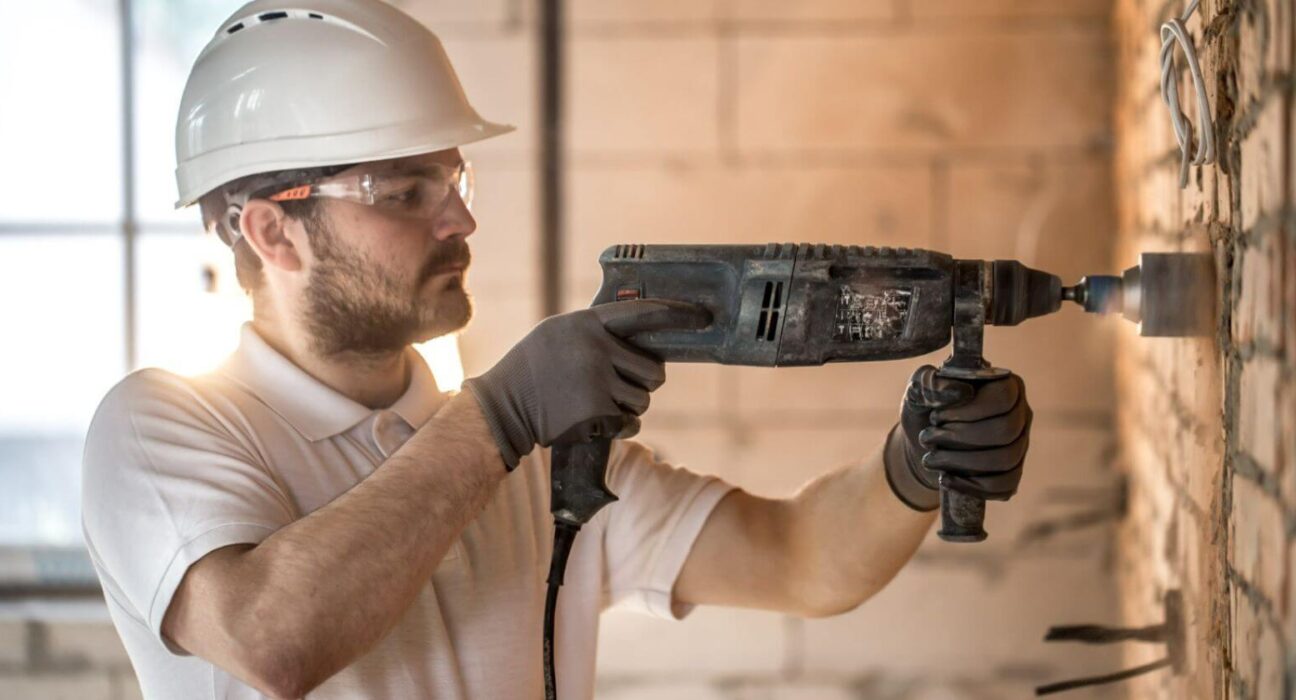
Drilling into concrete can seem like a daunting task, especially if you’re new to DIY projects. But with the right tools, preparation, and techniques, you can tackle this challenge with confidence. Whether you’re hanging shelves, mounting a TV, or installing anchors, knowing how to drill into the concrete will make many home improvement tasks easier.
In this blog, we’ll talk about how you drill into concrete and the materials you’ll need. I will discuss this topic step-by-step. Let’s move on.
Table of Contents
Tools and Materials You’ll Need
- Hammer drill (essential for concrete)
- Masonry drill bits (designed for hard surfaces)
- Concrete anchors or screws (depending on your project)
- Safety gear (gloves, safety glasses, dust mask)
- Masking tape or depth stop (to measure depth)
- Vacuum or compressed air (to clean out dust from the hole)
- Pencil or marker (for marking the drilling spots)
How to Drill Into Concrete Step-by-Step Guide
Choose the Right Drill and Bits
Concrete is an incredibly hard surface, so using a regular drill won’t cut it. For this job, you’ll need a hammer drill, which combines rotation with a hammering action to break through the concrete. Pair it with masonry drill bits, which are specifically designed to penetrate concrete, stone, and brick.
The size of the bit will depend on the size of the hole you need to drill. Check the anchor or screw package for the recommended bit size.
Mark Your Drilling Spot
Use a pencil or marker to mark the exact spot where you want to drill. Double-check the measurements to ensure accuracy. If you’re installing something heavy, make sure you’re drilling into a structurally sound section of the wall, such as near a stud or a thicker portion of concrete.
Set the Depth
Use a piece of masking tape to mark the depth of the hole on the drill bit. This will help you avoid drilling too deep. Alternatively, many hammer drills come with a depth gauge you can set for precise drilling.
Start Drilling Slowly
Place the drill bit at a 90-degree angle to the concrete surface. Start drilling at a low speed. This will help you establish a clean entry point and prevent the drill bit from slipping off target. Once you have a small indentation, you can increase the speed and pressure.
Let the Drill Do the Work
Apply steady pressure as the drill works its way into the concrete, but don’t force it. The hammering action of the drill will do the heavy lifting, and too much pressure can damage the bit or cause it to overheat. Be patient and take breaks if needed.
Drill to the Desired Depth
Continue drilling until you reach the marked depth on the bit. Avoid going deeper than necessary, as this can weaken the surrounding area and make your anchor less secure.
Clean the Hole
Once you’ve reached the desired depth, stop drilling and remove the bit. Use a vacuum, compressed air, or a small brush to clear out the dust and debris from the hole. This step is essential for making sure your anchors or screws hold firmly.
Insert the Anchor or Screw
If you’re using concrete anchors, insert them into the hole and gently tap them in with a hammer until they are flush with the surface. If you’re using concrete screws, you can directly drive them into the hole using the hammer drill or a regular screwdriver.
Additional Tips and Safety Considerations
Wear Protective Gear: Always wear safety glasses to protect your eyes from flying debris, a dust mask to avoid inhaling concrete dust, and gloves for hand protection.
Use the Right Drill Setting: Most hammer drills have both a drilling mode and a hammer mode. Ensure you’re using the hammer setting for concrete.
Keep Bits Cool: Concrete can cause drill bits to overheat quickly. Take breaks to let the bit cool down, or consider using a bit specifically designed for heat resistance.
Avoid Overdrilling: Don’t drill deeper than necessary, as it may weaken the surrounding area or compromise the strength of the concrete anchors.
Common Challenges and How to Overcome Them
The Bit Isn’t Penetrating: If your drill bit isn’t making progress, you might be using the wrong type of bit. Ensure that it’s a masonry bit and that your drill is set to hammer mode.
Hitting Rebar: Concrete often contains metal rebar, especially in structural walls or foundations. If you hit rebar, stop drilling and try moving the hole slightly, or use a bit designed to cut through metal.
Dust Clogs: If the hole keeps clogging with dust, remove the drill bit periodically and clean out the hole with compressed air or a vacuum.
Final Thoughts
Drilling into concrete is a task that requires patience and the right equipment, but with this step-by-step guide, you can accomplish it smoothly and safely. following these techniques will help you drill precisely and avoid damage.



